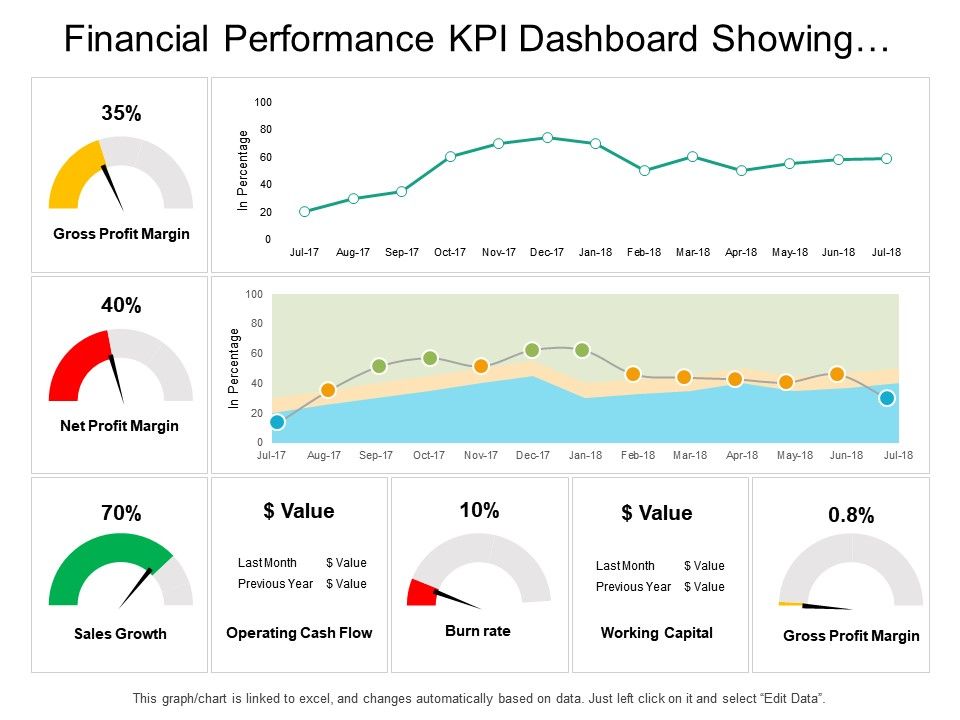
Less frequently, firms provide monthly statements with sales volumes or key performance indicators. The price/earnings ratio is often referred to as P/E (TTM) and is calculated as the stock’s current price divided by a company’s trailing 12-month earnings per share (EPS). The price/earnings ratio is often referred to as P/E (TTM) and is calculated as the stock’s current price, divided by a company’s trailing 12-month earnings per share (EPS). Trailing 12 months (TTM) is a term used to describe the past 12 consecutive months of a company’s performance data, that’s used for reporting financial figures. The 12 months studied do not necessarily coincide with a fiscal-year ending period.
TTM P&L keeps a running tab of how well an investment or project has performed over the prior twelve-month period. It takes the monthly or quarterly returns over that time period and reports a weighted average profit or loss figure. Analysts and investors use TTM to dissect a wide swath of financial data, such as balance sheet figures, income statements, and cash flows. The methodology for calculating TTM data may differ from one financial statement to the next.
Our writing and editorial staff are a team of experts holding advanced financial designations and have written for most major financial media publications. Our work has been directly cited by organizations including Entrepreneur, Business Insider, Investopedia, Forbes, CNBC, and many others. There is another, slightly more complicated TTM formula, but it is used more frequently because it is better adapted to the tools and datasets most commonly at an analyst’s disposal. Start with the most recent quarter–for instance, to make a TTM calculation in July 2020, one would begin with Q2, which ended in June 2020. Founded in 1993 by brothers Tom and David Gardner, The Motley Fool helps millions of people attain financial freedom through our website, podcasts, books, newspaper column, radio show, and premium investing services.
We’ve got 70 definitions for TTM »
You can also shift to a set of four consecutive reporting periods to analyze how the TTM value has changed over time. This term is commonly used to analyze and evaluate a company’s performance data, including revenue, earnings, and metrics. Trailing 12 Months is a measurement of a company’s financial figures over the past 12-month period, rather than traditional fiscal years. TTM – trailing 12 months is used to report financial figures that do not necessarily coincide with a calendar year or a fiscal-year ending period.

That could happen because the company’s TTM figures are still negative, even though it had a good quarter. Investors will be more likely to buy the stock if they know the company’s TTM figures are positive. The company is stuck in a “show-me” pattern, where analysts and investors are more interested in seeing improving long-term trends than in seeing the ins-and-outs of any particular quarter.
Trailing 12 Months (TTM): Definition, Calculation, and How It’s Used
It is thought to have originated in the hip-hop community, where slang terms are commonly used to express ideas and feelings. Although this is mostly used to invite people to communicate, engage and hold a conversation, it is also used as a way to show vulnerability and seek emotional support from others. Our mission is to empower readers with the most factual and reliable financial information possible to help them make informed decisions for their individual needs.

TTM data is often used in things like balance sheets, income statements and cash flow charts. By keeping a running tab of TTM metrics, a firm’s management and stakeholders can understand how the company is doing at any point in time using an apples-to-apples comparison. In other words, by always looking at the previous 12 months, effects such as seasonality or one-time charges can be smoothed out. Used to analyze mutual fund or exchange-traded fund (ETF) performance, TTM yield refers to the percentage of income a portfolio has returned to investors over the last 12 months.
Besides his extensive derivative trading expertise, Adam is an expert in economics and behavioral finance. Adam received his master’s in economics from The New School for Social Research and his Ph.D. from the University of Wisconsin-Madison in sociology. He currently researches and teaches economic sociology and the social studies of finance at the Hebrew University in Jerusalem. All content on this website, including dictionary, thesaurus, literature, geography, and other reference data is for informational purposes only.
Why You Can Trust Finance Strategists
The process of adjusting a financial metric like revenue by adding the most recent period past the latest reported fiscal year and subsequently deducting the matching period is referred to as the “stub period”. This TTM equation is often easier for analysts to perform and provides a better look at year-over-year data for a certain period of time. TTM accounts for both seasonality and other time-specific effects on a company’s operation that could have a greater effect on a short-term financial analysis.
Meta Platforms Stock Performance and Analyst Ratings – Best Stocks
Meta Platforms Stock Performance and Analyst Ratings.
Posted: Mon, 31 Jul 2023 07:00:00 GMT [source]
Using trailing 12-month (TTM) figures is an effective way to analyze the most recent financial data in an annualized format. TTM Revenue describes the revenue that a company earns over the trailing 12 months (TTM) of business. This data is instrumental in determining whether or not a company has experienced meaningful top-line growth, and can pinpoint precisely where that growth is coming from. However, this figure is often overshadowed by a company’s profitability, and its capability for generating earnings before interest, tax, depreciation, and amortization (EBITDA). Line items on the cash flow statement (e.g., working capital, capital expenditures, and dividend payments) should be treated based on the feeding financial statement.
TTM Yield
However, it is now used far beyond this subculture and is not limited to certain age groups, or to social media. For instance, an influencer shares a story on Instagram with the caption, “It’s a beautiful day to be alive, TTM” expressing his/her willingness to have a free dialogue with his/her followers. The acronym “TTM,” which stands for “Talk to Me,” has become the most widely used and popular slang term among the Gen Z (the digital native generation).
- This information should not be considered complete, up to date, and is not intended to be used in place of a visit, consultation, or advice of a legal, medical, or any other professional.
- The process of adjusting a financial metric like revenue by adding the most recent period past the latest reported fiscal year and subsequently deducting the matching period is referred to as the “stub period”.
- You are most likely to see it in DMs, but this term can also pop up in Stories, posts, and videos when a user is speaking to a broader group of people.
- This data is instrumental in determining whether or not a company has experienced meaningful top-line growth, and can pinpoint precisely where that growth is coming from.
- For example, working capital is compiled from balance sheet line items, which are averaged.
- To calculate a company’s revenue on a TTM basis, the following three steps can be followed.
This information should not be considered complete, up to date, and is not intended to be used in place of a visit, consultation, or advice of a legal, medical, or any other professional. The definition, example, and related terms listed above have been written and compiled by the Slang.net team. In order to calculate the TTM revenue of our company, we’ll start with our fiscal year 2022 revenue, add the Q revenue, and subtract the Q revenue. David Adler is an entrepreneur and freelance blog post writer who enjoys writing about business, entrepreneurship, travel and the influencer marketing space. However, it’s important to find acronyms that resonate best with your audience and brand.
Trailing Twelve Months (TTM)
These evaluations can include calculating key performance indicators such as net profit margin or liquidity. Although it is frequently used on Snapchat, the term wasn’t created on the platform, and you may see it used across a whole range of different social media apps including Instagram, WhatsApp, Facebook, TikTok, and more. For years now, Snapchat has been one of the most popular social media apps out there, allowing users to easily communicate with their friends and share posts with people on their contact list in the form of Stories. In texting and digital communication platforms, ttm stands for “Talk To Me.” This acronym is used as a simple request to initiate a conversation, indicating that the sender is willing to talk or discuss any topic.
- By looking at TTM data, we can avoid comparing Target’s seasonal apples to Altria’s steady oranges and instead compare the companies’ long-term performance trends on equal terms.
- It is especially handy because it can provide more recent data tied to a certain point in time.
- However, it’s important to find acronyms that resonate best with your audience and brand.
- Trailing 12 months (TTM) figures report metrics based on the last 12 months (or four quarters) to date on a rolling basis.
And, TTM can be an extremely effective slang term for building a strong and loyal personal brand, reaching new audiences, and driving engagement. This feature can also be used effectively to discreetly answer questions from their followers. This encourages the followers and creates an opportunity to interact and share their favorite delicacies in a lively conversation.
Trailing 12 months (TTM) figures report metrics based on the last 12 months (or four quarters) to date on a rolling basis. In addition to being used to measure recent trends or annual performance, TTM financial metrics are frequently used to compare the relative performance of similar companies within an industry or sector. Financial metrics commonly considered by looking at the last twelve months of figures include a company’s sales, stock returns, dividend yield, price-earnings (P/E) ratio and earnings per share (EPS). TTM is a financial term that stands for “trailing 12 months.” It refers to the past 12 consecutive months of a company’s financial performance. You calculate TTM figures with data from a company’s quarterly reports, either taken directly from those reports or as reported by your favorite font of financial information. The current TTM data at any time is the sum of the four latest reports of revenue, earnings, and other metrics.
Texting Conversations
Since financial markets are subject to fluctuations and seasonality, the trailing twelve months provide a more accurate and up-to-date picture of a company’s performance during the most recent year. It enables investors to make informed decisions based on the latest available data, as opposed to relying solely on data from the end of the previous fiscal year. TTM also stands for “Trailing Twelve Months” or “Trailing 12 Months” in the financial industry. This term refers to the past twelve months or one year of performance data from a company.

For example, if two quarters have passed since the latest fiscal year, the quarterly data that we would deduct is the first two quarters from the prior year. To calculate a company’s revenue on a TTM basis, the following three steps can be followed. Learn about the meaning and usage of other slang expressions like DTB and DTN on Netinfluencer.com to use them more effectively on your social media. Christina frequently engages with her audience via Instagram posts and the hashtag TTM, asking and addressing how she has “uncomfortable conversations with kids” and soliciting answers from her followers. Many Micro-influencers like Christina Ygre, a fashion, beauty, and lifestyle influencer (who is also a mother), also use this acronym to engage in meaningful conversations with their followers. A financial professional will offer guidance based on the information provided and offer a no-obligation call to better understand your situation.
This metric tells you what a company would be worth if sold and is another way to value it.
With TTM figures, we can get a more accurate picture of a company’s ability to perform over a longer period, across various market conditions and economic environments. Trailing twelve months calculations will depend on which financial metric is being considered. In general, TTM calculations will either (1) add up the figures from the previous 12 months (or four quarters) as a sum; or (2) take the average or weighted average of the previous 12 months’ figures. Trailing P/E is a relative valuation multiple that is based on the last 12 months of actual earnings, and is calculated by taking the current stock price and dividing it by the TTM earnings per share (EPS). Much of fundamental analysis involves comparing a measurement against a like measurement from a prior term, to decipher how much growth was realized. This marked improvement provides a clear snapshot of the company’s growth trajectory.